Poltergeist, Poltergeist 2: The Other Side, Poltergeist 3 (1982, 1986, 1988)
Directed by: Brian Gibson, Gary Sherman, Tobe Hooper
Written by: Brian Taggert, Gary Sherman, Mark Victor, Michael Grais, Steven Spielberg
Starring: Craig T. Nelson, Heather O'Rourke, JoBeth Williams, Julian Beck, Nancy Allen, Tom Skerritt, Zelda Rubinstein
They’re Here!
In a Californian suburb called Cuesta Verde live Steven, who is a successful real estate agent, his wife Diane and their children Dana, Robbie, and Carol Anne. One night, Carol Anne awakens one night and begins conversing with the family’s TV set, which has started transmitting static following a sign-off. The following night, while the Freelings are sleeping, Carol Anne again becomes fixated on the television set as it transmits static again and an apparition emerges from the television screen and vanishes into the wall, creating a violent earthquake within the house in the process. The next day more bizarre events begin to occur, such as glasses and utensils that spontaneously break or bend and furniture that moves on its own accord. That night, a gnarled backyard tree becomes animated and grabs Robbie through the bedroom window. While Diane and Steven rescue Robbie, Carol Anne is sucked through a portal in her closet. The Freelings realize she has been taken by the forces in the house when they hear her voice emanating from the TV………….
Like probably most horror fans I love ghost stories, but I also often find them amongst the most frightening of terror tales, both on screen or on the printed page. Most of the movies I consider to be the most scary revolve around ghosts or variations on the concept, such as The Innocents, Insidious and Ringu. I think that ghost stories on film can be brilliantly achieved without much money and without much in the way of special effects; it is things such as the fear of the unknown, the noises such as creaking doors, the sudden jolts etc. that are important in sending either a mild chill down your spine or have you climbing the walls! Very occasionally though there does come along a good ghost film that has all the money a major studio is able to throw at it and all the technical wizardry that allows for, and for me the finest example of this is Poltergeist, a film which is still much talked about. Perhaps the perfect horror film to watch with your kids and to start them off in the genre, it may very well scare them half to death, though for us adults it’s more a case of mild shudders, creepy atmosphere alternating with edge of seat thrills, and special effects which still hold up to this day. It may, deep down, be harmless and a touch cosy, but that doesn’t make it any less of a film. It remains to this day a source of great debate, because it has been claimed that co-producer Steven Spielberg, who couldn’t officially helm the film due to directing E.T. The Extra Terrestrial at the same time, directed much of it anyway and not the ‘official’ director Tobe Hooper. A proposed documentary on the 25th Anniversary DVD was never completed due to legal threats. Members of the cast and crew offer varying opinions, though it is generally acknowledged Spielberg both storyboarded the film and had final cut. To me, Poltergeist looks and feels like a Spielberg movie in almost every way, having many of his technical and thematic trademarks, but I will say no more on the matter!
The origins of Poltergeist can probably be traced back to Steven Spielberg’s 1972 TV movie Something Evil, which remains a great little scary movie and which I cannot understand has not been released on DVD. Some have also said that elements of Little Girl Lost from The Twilight Zone, with its story of a girl kidnapped by evil spirits in a house, made their way into Poltergeist, though the general opinion is that it evolved from Night Skies, which was an intended follow-up to Close Encounters Of The Third Kind. Controversy reared its head immediately; the original script by Michael Grais and Mark Victor was rewritten by Spielberg and at least eight other writers while two other writers who claimed they sent a similar script to Spielberg and that he had much of it used filed a law suit. The script was slightly toned down during shooting, principally the scene where Diane is dragged up a wall by an invisible force; originally she was to have been kissed and partially stripped. A partially built tentacled monstrosity was strapped and the procession of ghosts walking down the stairs originally showed the ‘Beast’ but was reduced. Still, bearing in mind this was before the ‘PG-13’ had been introduced, the film was rated ‘R’, but Spielberg, in one of many occasions where he got a film down to a lower rating [damn it, the man could have probably got Saw to a ‘PG’!], got it re-rated to a ‘PG’ Poltergeist was released the week after E.T. and was a huge success at the box office. Six months later though, Dominique Dunne, who played Danna, was strangled to death by her boyfriend, and this would certainly not be the only death of a Poltergeist cast member soon after the release of one of the films.
The opening of Poltergeist is very eerie and at first you think you could be watching a subtle ghost story, with the family dog running around knowing something is wrong, and Carol Anne being hypnotised by the TV and talking to it. The film then takes its time, establishing its deliberately archetypal suburban setting and environment, and revealing itself to be, in a way the flipside to E.T; though I am not a fan of that movie, I watched it the other day and was surprised how darkly atmospheric early parts of that film are, right on the verge of being a horror film. Anyway, back to Poltergeist, and there is a brilliant escalation of events, with the spirits being somewhat harmless at first in the way they move chairs about and such, until the creepy tree in the garden comes to life and Carol Anne is kidnapped. After this, the tension becomes as tight as a noose; no, the film isn’t that scary, but the tension is truly masterful. There is much conversation done in whispers, and, while if made these days the pace would be faster, the sense of the unknown is tangible. There are mild shocks, such as a paranormal investigator peeling his face off to reveal the skull beneath, but there’s just as much wonder and awe. When the procession of ghosts comes down the stairs, beginning with a terrific female spirit in a flowing dress, the whispy, partially glimpsed figures are things of beauty rather than horror. The scene has some especially evocative musical backing from composer Jerry Goldsmith, a rather mournful, melancholy piece, with the composer emphasising the sadness of the lost souls and the awe they create rather than the fear that they are causing.
Despite all the special effects, Poltergeist actually leaves quite a lot to the imagination; for example, when mother goes into the unknown to rescue daughter we don’t see what she sees except lots of white. There is some great dialogue from Tangina, the medium called in to help, about the Beast [the Devil?] and Carol Anne being held by ghosts, but we don’t see any of this. Instead our mind is left to conjure up images which are probably scarier than anything the filmmakers could have put on screen. The climactic scenes have no bones in throwing everything at you though and result in some truly thrilling, heart pounding cinema, though not before Hooper [or Spielberg!] has drawn the tension out to a nerve-shredding degree, replete with a bath scene where you repeatedly think something will happen and it just doesn’t. There’s a giant oesophagus, an especially horrid-looking spider-like creature, a toy clown come to life which plays very well on primal fears of; “What’s under the bed”, a hallway which gets longer [quite a few of the ideas in Poltergeist made their way into The Nightmare On Elm Street series], skeletons bursting up through the ground; it’s Spielberg-style thrills in the best possible manner, and, while you may be grabbing the arm of your seat or the person next to you so tightly it may come off, nor do you want the excitement to end.
Richard Englund’s effects, barring the odd cartoon tornado, still look very good even today, from the spectral hand that emits from the TV to the giant head [of the Beast?] that appears for no other reason than to say “Boo”! The skeletons at the end though actually were actual skeletons, something which actress JoBeth Williams was not told until after the sequence was shot [some have said that may have a reason for the supposed Poltergeist curse]. There is a strong human dimension to the film though, with most of the characters undergoing some sort of development and the scenes of communication with Carol Anne when only her distant voice is evidence of her presence being very touching. Of course it’s laughable how they continue to sleep in the house even after things have happened, and surely the neighbours would have been round if a tree had come to life and picked up somebody, not to mention after the probably very loud events afterwards. If you think about it too much some things don’t make much sense or are a little odd [is it me or is Diane an oddly irresponsible mother?], but most of the time Poltergeist is just too much fun for it to matter!
It was decided that having big stars would have made the film less effective, but nonetheless most of the cast are excellent. JoBeth Williams is really the main star of the movie and delivers a very gutsy and convincing performance but Craig T. Nelson is also great as Steven, who seems to be very quietly having a breakdown and Heather O’ Rourke is loveable as Carol Anne; the famous moment where she turns towards her parents and says; “They’re here” is perfectly delivered with the right combination of innocence and knowingness. Poltergeist is aided immensely by a fantastic score from Jerry Goldsmith, in my opinion better even than his other classic scores for Alien and The Omen trilogy. He gives us a beautifully sweet and touching lullaby for Carol Anne and superb musical backing for the ghosts, sometimes almost spiritual in nature, sometimes just plain scary. The score is one of the highpoints of a great movie which I don’t think has quite got its due but in my opinion remains one of the greatest chillers of the 80s, and also probably the best horror movie where nobody gets killed or seriously injured. To some it may lack edge, but I don’t think few can deny it is terrific entertainment, giving you something akin to riding on a ghost train and a rollercoaster at the same time!
One year after the events of Poltergeist, Cuesta Verde, the Freelings’ neighbourhood from the first film, is being evacuated and turned into an archaeological paranormal dig. The excavation leads to the discovery of an underground cave and its existence is revealed to psychic Tangina Barrons [who had helped the Freelings before], who tells a friend of hers, Taylor, a Native American shaman. It seems that the Freelings, who have moved to Phoenix, Arizona to live with Diane’s clairvoyant mother, are still in danger. Though the family is struggling financially, with Steve reduced to being a door-to-door hoover salesman, things seems okay until, whilst out in a shopping mall, Carol Anne sees a ghostly priest walk through people towards her. That night, she is contacted by evil spirits again, not through a TV because there are no TVs in the house, but through her toy phone……….
I have great fondness for Poltergeist 2: The Other Side; it was the first ’15’ rated movie I ‘legally’ saw at the cinema and, being as I was on my own, it scared the hell out of me, though of course I still stayed to watch the whole thing! A few months later I saw the original movie on TV and, while it didn’t terrify me in quite the same way, it was obvious that it was a far better film than the sequel. Poltergeist 2 is a highly enjoyable chiller, with some very strong sequences and one of the greatest and scariest villains in horror movie history [more on him later], but it is something of a mess and doesn’t really hang together. It feels more like a collection of good, and sometimes great, scenes strung together by a confused story that had been created in a rush with little thought, more a random collection of [sometimes very good] ideas rather than a fully fledged plot. It’s certainly no disaster though, and anyway it would have been almost impossible to top the original!
Michael Grais and Mark Victor returned to write the sequel, though Steven Spielberg, probably wisely considering the controversy around who directed the first film, decided to have nothing to do with it. It was obviously decided to go for a much darker tone this time round, while still avoiding on screen violence and deaths. Real skeletons were again used in a few scenes, but this time the crew demanded an exorcism, which was performed by Will Sampson, who played Taylor, the shaman in the film and who actually was something of a shaman himself. The exorcism may not have entirely worked though, because actor Julian Beck died of stomach cancer during post-production. The film was originally planned to be in 3D, with a few scenes shot to take advantage of the format. It has been reputed that the original cut was 130 mins, while others have said it was shorter, but it is a definite fact that MGM ordered the movie to be drastically cut down and that this resulted in a rather choppy film. Scenes which were undoubtedly removed include an attack by a flying toaster, Reverend Kane entering Carol Anne’s room in a dream, and part of the climax, but it really seems like much more is missing. The film did well, so much so that the writers were asked to write a sequel immediately, though it wasn’t really the megahit that the first film was.
Rather than beginning in great eerie fashion that Poltergeist did, this sequel opens oddly with Taylor assimilating some spirit, a strange way to start the film as we don’t have a clue who this guy is yet nor what on earth is going on. The discovery of the underground cave has some atmosphere about it, but the following scenes re-introducing the Freeling family just don’t have the skill and warmth as before. Nor do we really spend enough time with them before things start happening again. I miss the quirks, the bits of humour, of pathos, that the first film gave us; this sequel is colder in nature which was probably intentional but means we don’t care about the people so much. A clairvoyant subplot is now thrown in which is a little pointless because it seems like it’s going to become a really important part of the story [and possibly originally was?] but doesn’t really lead anywhere, but then the film really takes off…..in great fashion…..for a bit. Three words. Reverend Henry Kane!
A brilliant bogeyman who probably belongs in a better film and even deserves his own franchise, this terrifying demonic preacher, with his skeletal features and his creepy voice, trying to get into the Freeling’s house singing that bloody religious song “God is in…..his holy temple”, is well known for striking fear into the hearts of folk who saw Poltergeist 2, especially as teenagers like myself, when it came out. He still gives me the heebie jeebies, especially when he cries out to the family; “You’re gonna die in there…all of you…YOU ARE GONNA DIE…..”!! When I exited the cinema that day in 1986, I passed a wedding at a church and was very unnerved by the fact that two priests happened to be there, so much so that I crossed to the other side of the road! Inspired by the true story of the Reverend Jim Jones, who led his followers out into the desert and made them all commit suicide, Kane’s back story is initially very interesting. Kane was a preacher who believed the end of the world was nigh and led his people into a cave, then, when the day passed, refused to let them leave and they ended up virtually buried alive. Kane became a demon after death, but after this we are told he also became the’ Beast’, and the scripting becomes a total mess. So we are supposed to infer that a priest became the Devil? The story just gets sillier and more incoherent; at one point Steve becomes some kind of shaman like Carter, and the whole Carter character seems like he belongs in a different film, though he does provide some brief laughs, such as when he seems to con Steve out of his car!
Poltergeist 2 boasts two terrific horror set pieces, one where Robbie is almost crushed to death by dental wear which goes haywire, and one where Steve drinks a tequila, replete with worm. Steve becoming possessed and ‘bad’ would have worked better if the script had actually allowed him to harm or kill people, to become really evil, but his vomiting up of the grown worm is effectively gross and the hideous creature, a great H.R.Giger creation, is quite unnerving the way it scurrys about and grows into a hideous tentacled creature. Some corpses fall out at opportune moments in an effective way, and there’s a wonderfully eerie shot of whispy ghosts surrounding the house, but nothing is done with them, and there aren’t really enough horror scenes like this. The climactic sequence, where the family cross into ‘the other side’, replete with a spear that might just be the weapon to repel the Beast, and fly hand in hand as if they are in Neverland, really falls flat. It’s too short to make much of an impact but neither does it make much sense, so in its original longer form it may not have worked very well either. The special effects here, though, are very impressive, and indeed Richard Endlund does a terrific job throughout. Technically the movie still holds up very well.
Brian Gibson’s direction is fairly anonymous; supposedly he was totally out of his depth during the production, though it gets the job done. The returning cast members all fare well; Heather O’ Rourke gets to do a wonderful variation on her famous scene in the original where she puts down the receiver of her toy phone and says: “They’re back”. Zelda Rubinstein was nominated for a Razzie this time, an inexplicable decision, as she’s as nicely quirky as before, though doesn’t really get enough to do. Of course Julian Beck as Kane is the one who really steals the show! Jerry Goldsmith returns to provide a fine score that doesn’t really equal his previous one but is interestingly different. He gives this movie a somewhat different musical sound, with much use of synthesisers and Omen-like choir passages, though of course Carol Anne’s lovely theme returns at times. I think that Poltergeist 2: The Other Side may very well be one of those films that was great in its original cut, but sadly it’s doubtful we will ever know. It remains a very flawed endeavour that has some very good things in it, and it will always have a place in my heart.
Carol Anne is now living in a Chicago skyscraper with Diane’s sister Patricia Gardner, her husband Bruce and Donna, Bruce’s daughter from his previous marriage. Though it seems she is safe, she starts to have visions of Reverend Kane again. Carol Anne has been attending a school for gifted children with emotional problems, but it seems that her psychiatrist Dr Seaton getting her to discuss her previous experiences has enabled Kane to come back from the limbo into which he had been sent. Seaton just believes that she can perform mass hypnosis and thereby cause people to hallucinate, but Tangina Barrons senses that Kane has found Carol Anne and travels cross-country to find her. That evening, as Bruce, who owns the skyscraper, holds a work do, the high rise is drained of heat and people’s reflections in mirrors begin to act independently of their physical counterparts……..
The other day was the first time I had actually watched Poltergeist 3 since 1988, a sign of how I felt about the movie when it came out, as a travesty which tarnished the greatness of the first and the goodness [at least in parts!] of the second. Actually upon viewing it’s not that bad; countless far worse horror movies have been released since then, even in cinemas, over the last couple of years. The film is watchable, professionally made and is certainly good enough to pass an hour and a half if you’re bored. It’s just so feeble though, really seeming like the last gasp of a dying franchise, only this franchise was still only film number three, and film number two, despite its problems, was still full of ideas and even inspiration. It’s almost as if nobody really cared but were contracted to make a Poltergeist film so just decided to do the job and get it over with as quickly as possible.
After Michael Grais and Mark Victor turned down the request to write a third Poltergeist film, the job was given to Brian Taggart and Gary Sherman, who would also direct. With at least two decent genre films behind him, Deathline and Dead and Buried, he must have seemed like a good choice, though the budget was somewhat lower than the previous two films, which meant that the ending, which was originally intended to involve such delights as Kane’s head sprouting wings and flying around, was rewritten. Zelda Rubinstein left the production half way through as her mother died and her role was cut down. Then, just as production was nearing completion, little Heather O’ Rourke died from Crohn’s disease, where the intestinal tract is enflamed, and the film was shelved for eight months. According to Sherman, the ending was rewritten a third time, cutting 17 pages down to three, because MGM just wanted production to be over and done with and also so that O’ Rourke didn’t need to be seen much. Others though have claimed that the second ending, which included Kane’s head exploding and a tearful farewell scene, was actually shot, but that MGM for some reason did not like it, so the hurried compromise that we now have was shot to replace it. Because the film was now too short, bits and pieces initially cut out, including every available bit of O’ Rourke, were put back in, fatally unbalancing the film. The public did not seem too interested in Poltergeist 3 and the unhappy production barely made its money back.
There is no doubt that there is a certain morbidity about Poltergeist 3 which one really feels whilst one watches it. Twelve year old O’ Rourke, her face all puffy due to steroids, is basically dying throughout the film, and, while her character is unsurprisingly given a happy ending, the horrible feeling is that Kane got her all along. I found it hard to get rid of these thoughts whilst watching the movie, though of course if it had been good than I may have forgotten them! Opening with a rather uncanny shot of a window cleaner’s soap revealing the face of Carol Anne, who is the other side of the window, the movie then seems quite bad for about ten minutes, with truly atrocious dialogue introducing the characters. Amazingly though, after this it then starts to get rather better and initially feels like this could the best of all three films as a dark, creepy atmosphere is slowly but surely built up.
Carol Anne keeps having quick, eerie glimpses of Kane. A gruesome manikin turns its head [this was originally to feature in the climax too]. And then there’s lots and lots of stuff with mirrors. I personally find mirrors a bit creepy anyway, so seeing things like somebody’s reflection standing still while the actual person is moving is certainly liable to send the odd shiver down my spine! The best bit is when people are walking alongside some lifts and the reflection in the mirrors on the wall shows lots of Kanes emerging from the lifts. Nicely shivery, and good use is being made of the cold clinical interior design of the half-empty skyscraper. Unfortunately, it soon becomes apparent that the film is unwilling to do much else. The characters, who now include a group of teenagers who belong in a Friday The 13th movie, spend much time wondering about and things do happen, with people pulled into pools of water and even the odd fatality this time [though of course this doesn’t automatically mean that it will be the last we’ll see of them!]. There’s a rather gruesome scene where one person climbs out of someone else’s body. Actual excitement is virtually missing though; the best this episode can muster is a guy being attacked by possessed cars, and even this scene could have been done a whole lot better.
As Poltergeist 3 limps to its pathetic climax, it’s clear that the promise of some of the first half is just not going to be fulfilled. Kane, now played by Nathan Davis, and still looking reasonably scary but now saddled with a distorted, robotic voice that becomes laughable, does nothing but constantly call Carol Anne’s name. “Carol Anne, CAROL ANNE…..”; soon everyone else joins in and it becomes very tedious. The name is actually said 102 times! If you played a Poltergeist 3 game and had a swig every time you heard someone say the name, you’ll probably be totally blotto by the end of the movie! Characters behave increasingly illogically – throughout, Patricia has constantly made it clear that she hates Carol Anne, but then suddenly starts saying she loves her, seemingly just because the script needs her to! Another scene has two ghosts embrace, one of them tear off some skin of the other’s face, then walk off laughing. Huh? It’s quite random, but not the kind of random where you’re on the edge of your seat wondering what will happen next, but the kind of random that gives the impression the script was made up on the spot. When this dreary nonsense finishes, I would imagine nearly every viewer would think they have just watched a totally rubbish film and forgotten about the good things in the first half.
The limited special effects, most of which were done ‘in-camera’, are okay. The cast are reasonable, though Tom Skerritt and Nancy Allen clearly seem to be having an ‘off day’ and are out-acted by O’ Rourke, who is so touching and cute and almost gives the proceedings some kind of centre. Jerry Goldsmith turned down doing the score, so Joe Renzetti replaced him with his synthesiser doodling. It’s a very average and forgettable score from the guy who, the same year, wrote such effective music for Child’s Play. Poltergeist 3 does have a few things to recommend it and is not quite a disaster, but is still a poor close to the trilogy. In fact, it doesn’t even feel part of it to any great degree. I have a feeling that the Poltergeist remake will at least be better than this movie, but the more I think about it, maybe it would have been better if they remade Poltergeist 3 as a potential ‘first instalment’, considering that it had quite a bit of wasted potential? I would personally be far more receptive to all these remakes if they remade things that didn’t work so well the first time round rather than classics that would be hard to top.
Review of the new Poltergeist remake coming soon!
Alternate review of the original Poltergeist from Bat here: https://horrorcultfilms.co.uk/2014/08/poltergeist-1982/

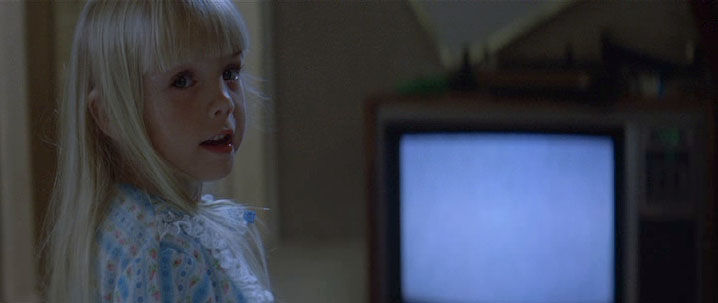
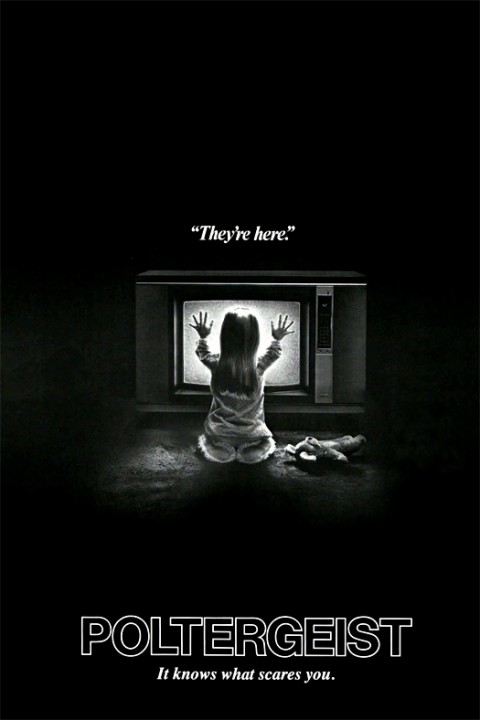

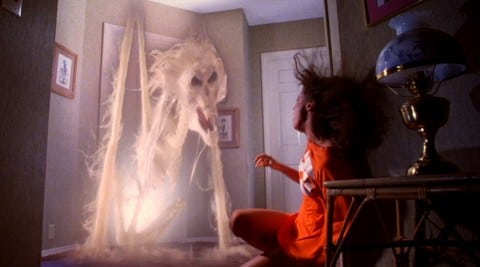


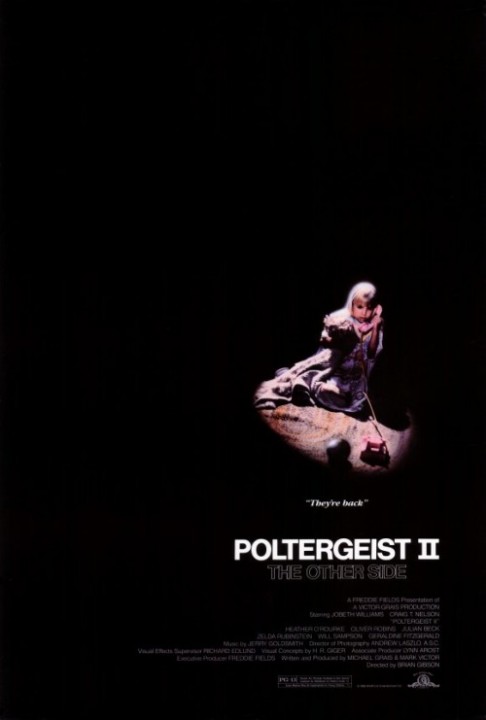
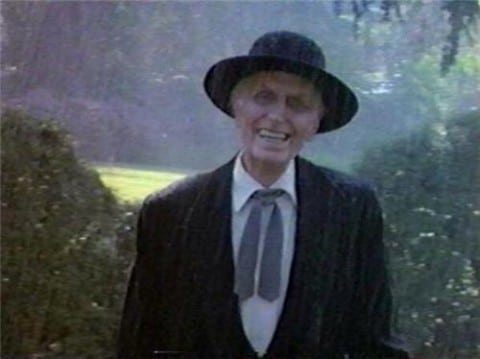
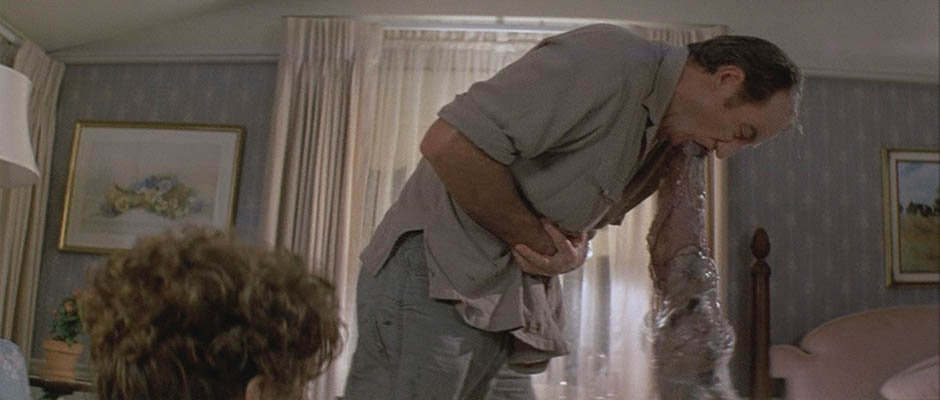

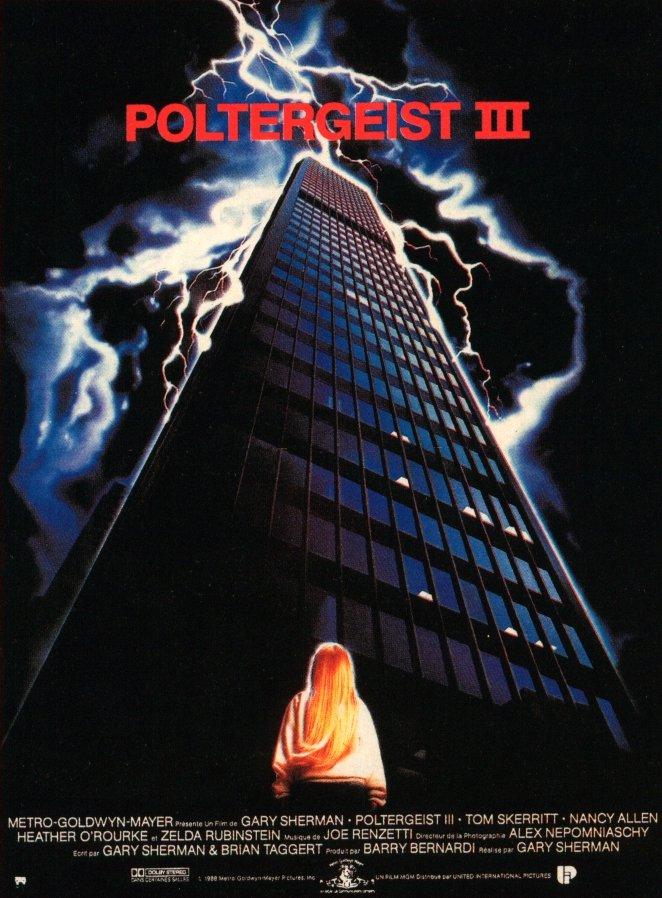



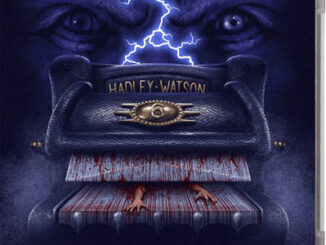
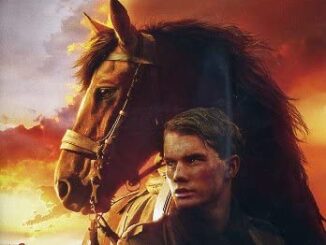
Be the first to comment